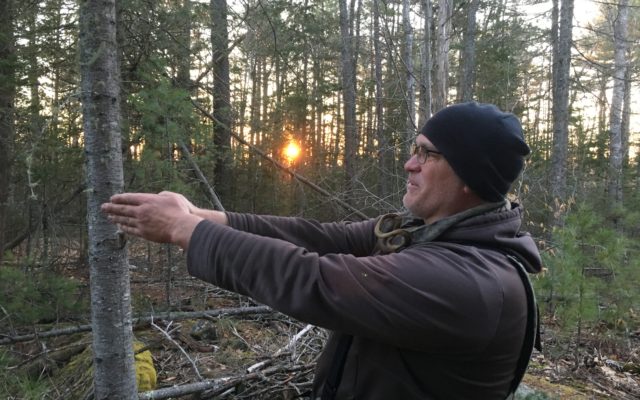
Here are some scouting techniques to help you fill your turkey tag
Only a few days remain until the start of Maine’s spring turkey hunting season on Saturday, May 2.
The Maine Department of Inland Fisheries and Wildlife on Tuesday announced the season would begin earlier and suspended the requirement to register harvested birds to accommodate social distancing guidelines.
Time is running out for hunters who want to lay the early groundwork for a successful season with a detailed scouting plan.
Folks who won’t be scouting or hunting on their own property should contact the landowner to ask for permission. It’s the sportsmanlike thing to do, and it should prevent any future misunderstandings. When you get the OK, stay in touch so the landowner knows when you might be out on the back 40.
The basic tenets of turkey scouting, according to Field & Stream, include identifying food sources and locating areas where male turkeys perform their spring strutting rituals. The birds have moved from wintering areas into places where they can more actively seek out food and engage in mating behavior.
Two other things to consider are finding logging roads or tote roads that cut through wooded areas and connect with fields, and pay attention to when turkeys are showing up in your preferred hunting territory.
The most talked about way to scout for turkeys involves finding out where they’re sleeping. You might come across piles of droppings or feathers at the base of trees — often close to a water source.
Or, if you know where they like to be late in the day, you might catch them during legal shooting hours before they head up into the trees to roost.
It’s also possible to arrive in the dark and use a locator call — such as an owl or crow — to elicit a response that will tell you where the turkeys are roosting. You can then try before dawn the next morning to set up within calling range once they fly down in the morning. Just don’t get too close and risk spooking them.
If the toms and jakes aren’t responding or gobbling when they leave the roost, the hunter has to have a good idea where they’re headed next. In the spring, hens are likely to first visit feeding areas located near the roost, which during mating season means the gobblers aren’t far behind.
One expert said south-facing slopes that get ample sun and present food (greenery and bugs) are a good place to check.
Cabela’s said hunters scouting for turkeys should be looking for telltale signs such as poop, feathers and ground that has been raked over by the birds.
Last year’s productive mast crops should mean plenty of leftover acorns and beech nuts, so those hardwood stands should be prime turkey territory. Green farm fields also can be good, especially during the late afternoon hours.
Male turkeys that aren’t engaged in eating, or chasing hens, may be putting on their mating displays. Experts say strutting activity often takes place in clearings and fields on the periphery of the woods. There you might find feathers or the drag marks they produce, which leave a figure-8 pattern on the ground.
Moving quietly through the woods and listening intently for turkey vocalizations also provides good information about where they might be found. However, too much tromping around could make an intended target more skittish about the presence of hunters and less receptive to calling when the time arrives.
A story on biggamelogic.com suggests that an aerial map of your planned hunting area, sometimes available on Google Maps, can provide important information about the larger framework of the turkey habitat.
Turkeys are birds of habit, so they’re likely to visit the same places at similar times each day given favorable weather conditions. Hunters should note the time and place of sightings and use that information to their advantage on future forays.
If your scouting opportunities are limited, it’s beneficial to be surveying a particular area at the same time of day that you plan to hunt.
Tote roads or trails that connect the roosts, feeding grounds, strutting zones and fields also can be highly productive, especially if you know when the turkeys are using them.
Remember in your scouting to be aware of any barriers, natural or manmade, located between a potential calling spot and where you expect the birds to be. Streams, fences and other obstructions might deter the turkeys from making their way to you.
Here’s to hoping that your first day of the season is so successful that it’s also your last day!